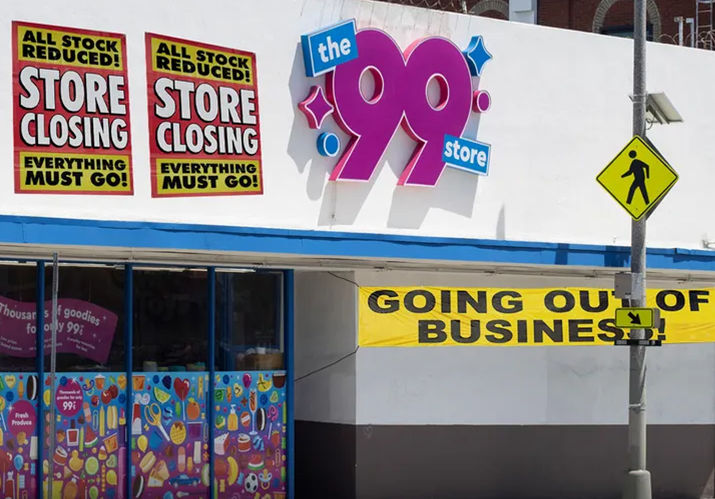A young man by the name of Dave Gold wanted to establish a price-point retailer in the USA consisting of general goods that the public loved. It would be your one-stop solution to everything at a much lower price; that’s when in 1982, the 99 Cents Store was established and grew to as many as 371 branches across California, Arizona, Nevada and Texas. Dave Gold inherited a liquor store in downtown Los Angeles and decided to run a test by selling bottles of wine at a fixed price-point of 99 cents.The store initially offered all products for 99 cents or sometimes less; but then later increased their retail prices. After being in the business for more than 40 years, in April of 2024, the business announced its closing of the headquarters and all of its 371 branches. With extreme sadness to their loyal customer base came the decision of the shareholders who regretfully had to make this decision due to many different reasons.
One common reason is the rise in operating costs, such as rent, utilities, and labor expenses, which can make it challenging for these stores to maintain their low prices while still turning a profit. Additionally, increased competition from online retailers and larger discount stores might have impacted their sales. Shifts in demographics or neighborhood dynamics can also impact the customer base of these stores.
These stores came in great use for those who were struggling financially and that had to survive with cheap stores like 99 cent stores. Now you might be wondering, “why are they closing all the branches?” Interim CEO, Mike Simoncic, said in a statement that the retailer has struggled for years as a result of the COVID-19 pandemic, changes in customer demand, inflation and rising levels of product “shrink”– a measure that encompasses losses from employee theft, shoplifting, damage, administrative errors and more.
We all know of the main cause, and one of the concerns I have is how will the closing of this store affect many other stores in multiple states. There are many things that could occur, such as the profit for other retailers such as the dollar stores. They might get more profit because customers will rely on the bargain prices looking at alternatives for grocery shopping. Or it might cause more poverty and homelessness as the lower class might have relied on the 99 cents store and would not be able to afford anything more costly. It is also possible that new businesses might take the opportunity to open in the vacated store locations, offering different products or services to meet the needs of the community. Overall, the closing of 99 cent stores can be a result of a combination of these factors affecting their ability to stay in business.
